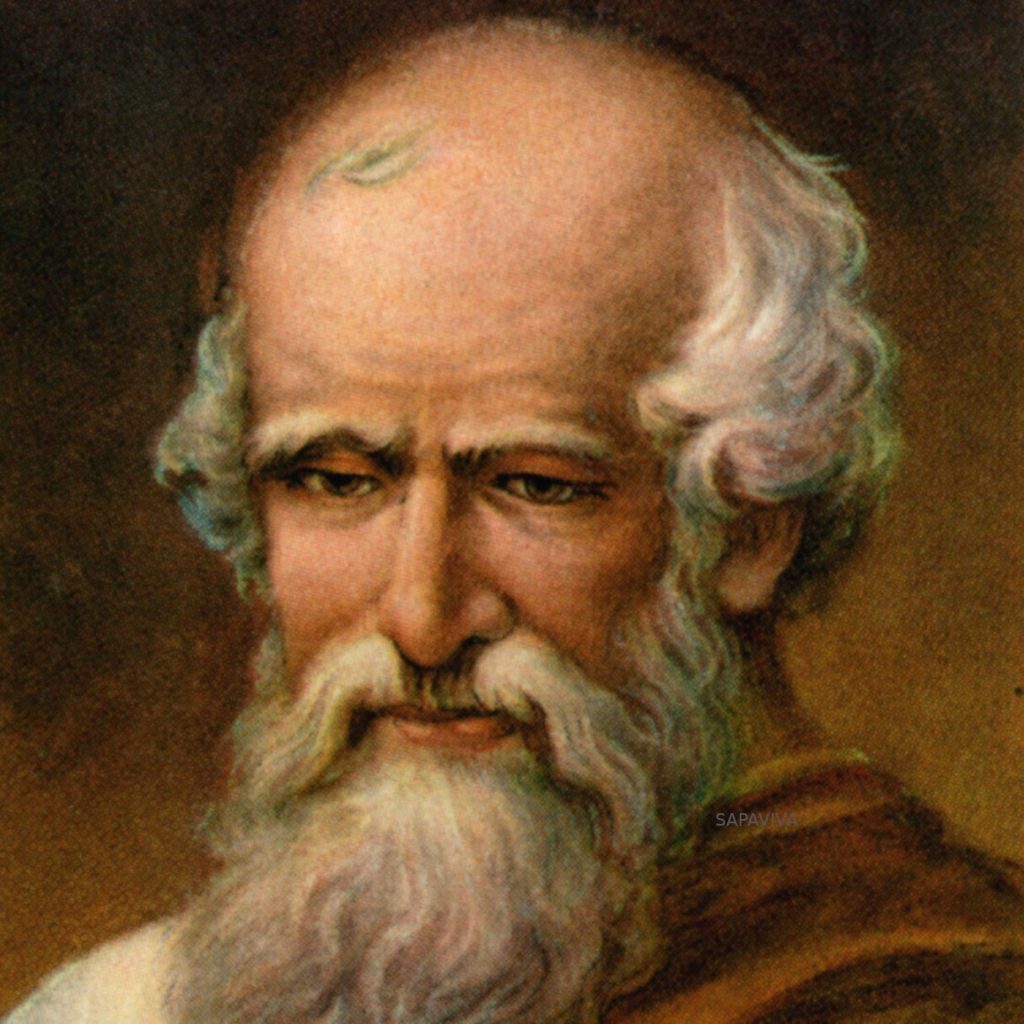
Quick Info
Born
287 BC
Syracuse, Sicily (now Italy)
Died
212 BC
Syracuse, Sicily (now Italy)
Summary
Archimedes stood as the preeminent mathematician of his era, leaving an indelible mark on geometry that reshaped the discipline. His innovative techniques foreshadowed the development of integral calculus. Beyond his theoretical achievements, he proved a pragmatic inventor, devising an array of machines, including pulleys and the renowned Archimedian screw pump.
Biography
Archimedes, hailed as the preeminent mathematician of his era, left an indelible mark on geometry, effectively reshaping the discipline. His innovative methods foreshadowed the development of integral calculus. Beyond his theoretical contributions, Archimedes was a pragmatic inventor, responsible for devising a diverse array of machines, including pulleys and the renowned Archimedian screw pump.
Our understanding of Archimedes is somewhat limited, primarily derived from his own writings, such as “The Sandreckoner,” in which he mentions his father, Phidias, who was an astronomer. Unfortunately, little else is known about Phidias. Notably, a lost biography of Archimedes penned by his friend Heracleides could provide invaluable insights into his life and work, should it ever be discovered or excerpts found in other writings.
Archimedes, a native of Syracuse, Sicily, is rumored to have ventured to Egypt, where he allegedly conceived the Archimedes’ screw, a pump still employed worldwide. It’s highly probable that, as a young man, he studied under the successors of Euclid in Alexandria. He not only exhibited a profound familiarity with the mathematics cultivated there but also maintained personal connections with mathematicians in Alexandria, sending his findings along with personal messages. His high regard for mathematician Conon of Samos as both a skilled mathematician and a close friend is evident.
Various sources, including Plutarch and Livy, offer glimpses into Archimedes’ life. Plutarch suggests that Archimedes had familial ties to King Hieron II of Syracuse, possibly being related and well-acquainted with the king’s family. Archimedes dedicated “The Sandreckoner” to Gelon, King Hieron II’s son. His reputation as a mathematician and inventor of war machines earned him notoriety, particularly during the defense of Syracuse against the Romans led by Marcellus.
Archimedes’ inventions, such as war machines and the compound pulley, brought him acclaim during his lifetime. He demonstrated his prowess by moving a ship with ease using his engineering inventions. Despite these practical achievements, Archimedes held a deep conviction that pure mathematics was the noblest pursuit. He dedicated himself to exploring the beauty and precision of mathematics, contrasting it with engineering and profit-oriented endeavors.
Archimedes’ mathematical contributions were extraordinary. He perfected a method of integration that allowed him to calculate areas, volumes, and surface areas of various shapes. His pioneering work in integration paved the way for future mathematicians such as Kepler, Cavalieri, Fermat, Leibniz, and Newton. Notably, he approximated the value of π and devised a system for expressing large numbers.
His principles of hydrostatics, including Archimedes’ principle, laid the foundation for understanding buoyancy. He also studied the stability of floating bodies. Archimedes’ work on geometry involved solving intricate problems and providing lucid explanations. His treatises remain masterful examples of mathematical exposition, demonstrating his genius and meticulous approach.
While some of Archimedes’ works have survived, others, like those on semi-regular polyhedra, mirrors, balances, and levers, are lost to history. The recent discovery of “The Method” in a 10th-century manuscript offers valuable insights into his problem-solving techniques.
Archimedes met a tragic end in 212 BC when Syracuse fell to the Romans. Three versions of his death have been recounted: in one, he was killed while engrossed in a mathematical problem; in another, he pleaded for time to finish his work but was slain; and in the third, soldiers mistook his mathematical instruments for gold, leading to his demise.
Archimedes had requested that his tomb feature a representation of a cylinder circumscribing a sphere, along with his groundbreaking result on their ratio. Cicero, who sought his tomb in 75 BC, eventually located it and found the inscription. Nevertheless, it took centuries for Archimedes’ mathematical achievements to gain widespread recognition, thanks in part to editions and commentaries by Eutocius in the sixth century AD.
Today, we assess the accuracy of different versions of Archimedes’ treatises by evaluating their retention of his Dorian dialect.


